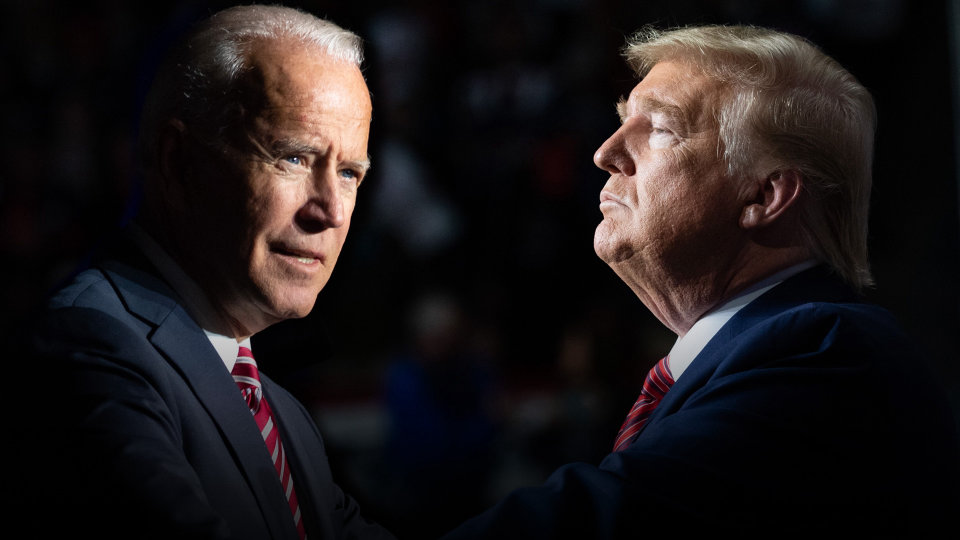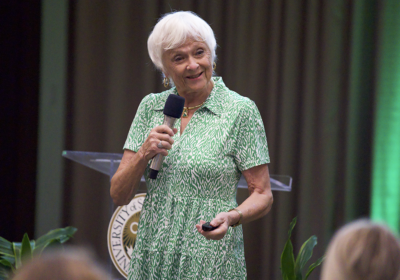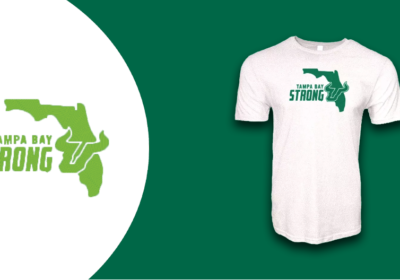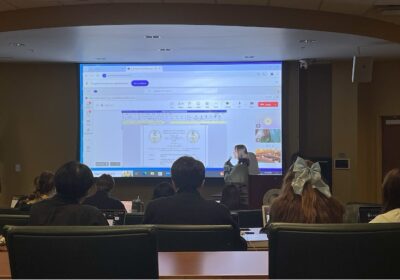Unpredictable polls, outcome in presidential election, professors say

More than 24 hours after the start of ballot counting, the final results of the presidential election have yet to be announced. The election didn’t go in the direction polls suggested and as of Thursday morning, each candidate still had a path to victory.
That path to the necessary 270 electoral votes for either candidate to win did not unfold in the way that polls or USF professors anticipated. The Economist’s polls and predictions altogether simulated 20,000 scenarios in which former Vice President Joe Biden won the election 97% of the time. The most recurring predicted number of electoral votes for Biden was 383.
While the election still has electoral votes left to call, at this point, Biden could not reach this number even if he won all of the uncalled states.
Edwin Benton, professor in the Department of Government and International Affairs, attributed this national polling overestimate to a number of factors, one of which was Biden’s unwillingness to condemn rioters late in the election.
“I think that played a big part in people steering away from Joe Biden, who was perceived to be soft on crime,” he said. “He didn’t take a stand. He could have said something like, ‘We understand your gripes, your complaints and we need to work on it without doubt, but we won’t tolerate violence.’”
Another major pickup for President Donald Trump that the polls did not reflect until very late in the campaigns, according to Benton, was the support of many Latino voters, especially Cuban Americans.
“They are very strongly against socialism,” he said. “Donald Trump painted Biden as a socialist.”
This underrepresentation in polling, according to Steven Tauber, professor of political science, propelled Trump to victory in Florida much more quickly than predicted.
“Latino voters seem to have moved back to the Republican party so Trump had a fairly comfortable victory in Florida,” he said. “I don’t think people thought that Trump would win as easily in Florida as he did.”
Biden won Miami-Dade County by 7.3% of the vote, according to The New York Times, while Hillary Clinton won Miami-Dade County by 29.61% in 2016, indicating a major increase in percentage for Trump in the county.
Trump’s win in Florida as a whole largely stemmed from advertising his campaign to the Latino population in Miami-Dade County, which traditionally leans Democrat, according to Associate Professor in the Department of Communication Joshua Scacco.
“Usually, the Democrats win Miami-Dade County, and they did [Tuesday] night, however they didn’t win it by the margin that they usually win in order to be competitive statewide,” he said. “Because President Trump had done a lot of messaging, effort and policy efforts aimed at some of the communities in Miami-Dade County, by the time the election started, he already had a solid foundation from which to work from.”
Despite the polls’ inability to predict this response from Latino communities, Benton said that the majority of inaccurate polling predictions were due to people being unwilling to respond with their actual presidential preference.
“I think a lot of people who supported Donald Trump opted out of the polls and consequently the polls were skewed away and unrepresentative of that block of voters that made the election a lot closer than it was predicted to be,” he said.
Nicolas Thompson, a political science professor at USF, agreed with this no-response bias theory. He said that some people just do not want to engage with pollsters.
“Perhaps there is some sort of selection bias that the people who participate in the poll are more kind of party activists in some way,” he said. “Maybe they are more encouraged to get their voice out there.”
As a counterpoint to Florida, Arizona also served to surprise voters and pollsters alike, according to Thompson, as Biden gained more votes than Trump in the state early on.
“For a long time, Arizona was kind of the heart of conservatism within the Republican party,” he said. “It is interesting seeing major shifts occur in that state.”
One prediction found to be accurate about the election, according to Tauber, was that there wasn’t a clear winner by the end of Election Day. This was largely attributed to states like Wisconsin and Pennsylvania not being able to count their early votes and mail-in ballots until the day of the election.
“Pennsylvania has a lot of ballots, about one and a half million or so that are still being counted,” he said. “These are ballots that have arrived on Election Day.”
“They also have permission to accept late-arriving ballots and there are some issues with the post office,” he said.
Pennsylvania had 89% of votes counted as of Nov. 4, according to The New York Times, with the 11% of holdouts being mail-in or early voting ballots.
Pennsylvania is not expecting to have all its ballots counted until Friday, according to Tauber, so the American public may not learn of a winner until then.
“Trump has about a 440,000-vote lead but the mail-in ballots in Pennsylvania were heavily by Democrats,” he said. “So the expectation is that Biden is going to overcome that lead.”
Another unanticipated development was the Democratic underperformance in Senate races, according to Tauber. Democrats had incorrectly anticipated flipping seven or eight Republican seats. The current projected outcomes will most likely result in a majority Republican Senate as only one seat had flipped in favor of the Democrats so far.
As of Nov. 4, the Republicans held 48 Senate seats while the Democrats held 46, according to the Associated Press. There are only four more seats left to be called, and a party needs 51 to hold the Senate majority.
“If Biden wins, you know Biden’s going to have to rely on his long history of knowing a lot of senators and really try to get people to come together in order to have some path forward,” Tauber said.
This election has created political and social polarization throughout the country, according to Benton, and it could potentially be heightened when all of the national elections are settled.
“Regardless of who wins the presidency, or who controls the Senate, there is going to be a lot of fighting, bickering and locked down kind of politics,” he said. “There will be a lot of fierce battles back and forth.”
Even though the race so far has deviated from large-scale polls and predictions like those of The Economist, Scacco cautions judging them prematurely due to the margins of error associated with polling as well as the outstanding votes.
“I think that when all of the votes are tabulated, the polling and surveys will be much closer to what happened probably nationwide and in some states more than others,” he said.
Thompson felt slightly different, stating that the polls being incorrect was in itself an unanticipated facet of Election Day.
“Despite the advances in employing techniques that were meant to deal with some of the problems from the 2016 election, once again the polls are somewhat systematically off,” he said.
As a new day begins with the election winner still undeclared, the professors predict that Pennsylvania, Nevada, North Carolina and Georgia will be scrutinized, as those states will ultimately decide the final outcome. Biden’s current leads give him a clear path to election, according to Tauber.
“If Biden keeps Nevada and Arizona, it will put him at 270 electoral votes,” he said.
No matter how clear the path, Benton expects the candidates on both sides to put up a fight in the coming days and the coming four years as the elected officials take their positions in the presidency, House and Senate.
“They are going to fight to the bitter end on every piece of legislation and policy,” Benton said. “I really believe the closeness of the election reflects just how sharply and deeply divided the nation is, and not just our politicians, but our citizen voters.”
Despite the polarization of the election, and the infighting which is still predicted to come, Scacco said that this election will leave its mark on the nation.
“We see throughout American history that our moments of greatest polarization are also our moments of greatest political participation,” he said. “In terms of raw vote totals, more Americans voted in this election than in any previous election.”
The voter turnout, currently, is estimated by NBC News Projections to be 159.8 million. In 2016, 139 million votes were cast, according to The New York Times. Biden is currently leading in the popular vote with the highest number of votes for a candidate in history at over 71 million, according to MSNBC.
Nevada officials expected to announce the winner of the state’s six electoral votes Thursday, though other states were not set to report until Friday, meaning the country may not know the final results until then.
“I think we just have to wait and see,” Scacco said.






